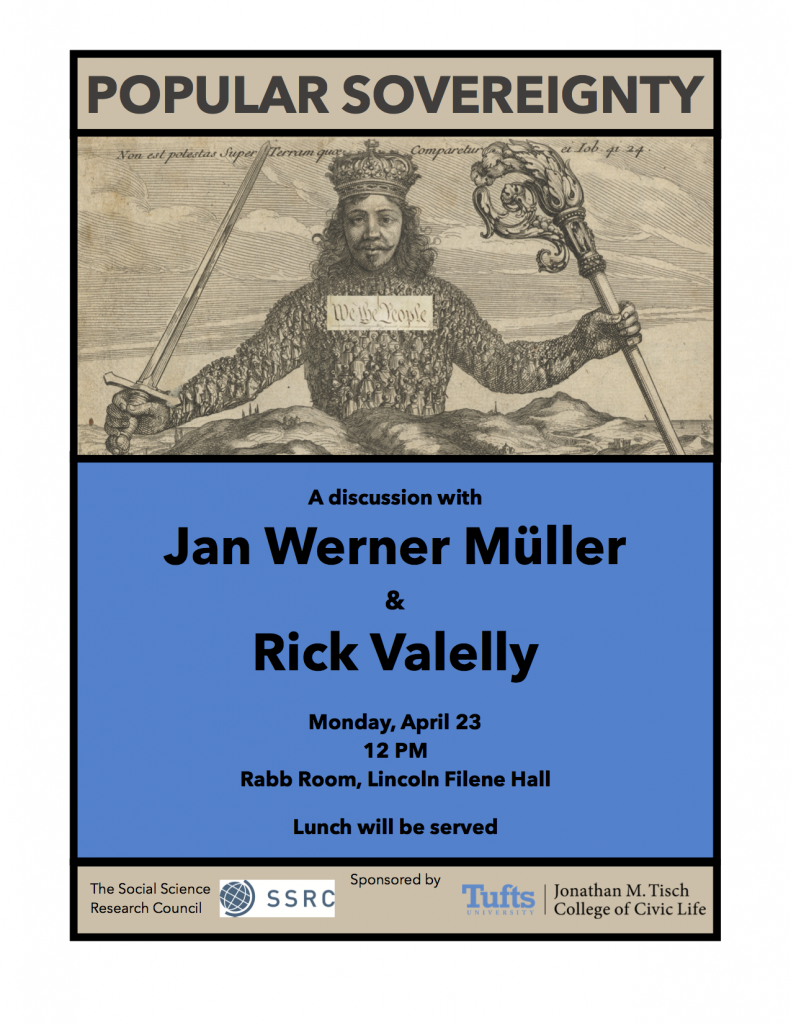- Facebook328
- Total 328
Donald Trump says many things. Some are innocuous and banal. Quite a few are inconsistent. And some provide evidence that he belongs in these three categories:
- A “populist” in the particular sense proposed by Jan-Werner Müller. (I also like to retain more positive definitions of the same word.) For Müller, a populist is someone who believes that the whole authentic people is unified behind a set of values that the populist leader explicitly expresses. Therefore, the opposition is illegitimate. Elections that favor the populist leader are sacrosanct, and anyone who criticizes or strives to reverse these results is an enemy of the people. But elections that challenge the populist must have been rigged or stolen. “A los amigos, justicia y gracia. A los enemigos, la ley a secas.”
- A chauvinist, meaning someone who explicitly and apologetically favors an in-group and disparages an out-group. In the United States, racism is a major variety. But in some other countries, the leading chauvinists are inspired by religion or nationality instead of race.
- A media personality who projects a combative personality, who disparages opponents, who cultivates “outrage,” who “seem[s] to always react to controversy and even aversion by leaning into it,” and who claims honesty or authenticity on the basis that he says things that give offense or cause pain–except not to his core audience. This style is prevalent on talk radio, certain reaches of cable news–but equally important, in supermarket tabloids, WWF, and reality TV shows like The Apprentice.
These three categories need not intersect. You can be an outrageous media personality who isn’t a populist or a chauvinist, a chauvinist who isn’t a celebrity, etc.
None of these categories is new. White Supremacy has been near the center of American politics since the beginning. Various forms of populism and chauvinism were much more extreme around the world in 1939 than today. But there does seem to be a global boom of unapologetic chauvinist populists who use media effectively.
The right doesn’t own these categories, and the left doesn’t consistently avoid them. I know plenty of people who believe that the Tea Party is pure Astroturf, a creature of right-wing billionaires. That is a populist move in Müller’s sense: it declares a large number of actual Americans to be illegitimate participants in politics. By the way, it’s different if you hate and fear your political opponents. That is partisanship, but not populism, so long as you acknowledge that your opponents are fellow citizens and you must share politics with them.
We’ve seen plenty of examples of these categories, but we have never had a president who fits all three. The combination poses a severe threat to our institutions and world peace.
Insofar as the problem is populism (in Müller’s sense), then I think an electoral shellacking will be the best remedy. Even if Republicans lose the 2018 election badly, the strongest Trump supporters (30-40% of the population) will continue to think that he speaks for the whole genuine American public and the election was rigged. However, Trump can’t govern without conservative and business elites. I think they will abandon him if they see that he is dragging them into the minority.
By the same token, if Republicans do better than expected in ’18, and/or Trump is reelected, we are in for much more populism. And if Trump’s presidency ends for a relatively extraneous reason, such as personal criminality, then the picture will be muddy enough that populism will remain an attractive option. (I often think that we are fortunate in our populist; if he were smarter and more disciplined, we would really be in trouble.)
Apart from elections, we have two other assets in the struggle against Müller-style populism. One is pluralist populism , which portrays “the people” as highly diverse (I discuss that rich tradition here).
The other is genuine conservatism. Real conservative thought is diametrically opposed–in principle–to the idea that any government can ever be authorized by a unitary public. The left/right spectrum originated in the French Revolution, and the Jacobin left was the populist side, in Müller’s sense. Conservatism emerged in reaction to the revolutionaries’ claim to a popular mandate, and great conservative thinkers have always opposed such claims. Many Republican politicians will go along with Trumpian populism as long as it wins elections; but conservatives will denounce it from the rooftops. The question is how many conservatives actually exist.
Insofar as the problem is chauvinism (meaning, in the USA, racism, religious bigotry, and sexism), then it’s the next chapter in a basic American story. Progress is hard-won and tends to have a zigzag pattern. I am a fan of Barack Obama for other reasons than his race, but it is significant that he was the first leader of a majority-white nation to have modern African ancestors–and the first US president in modern times to have a foreign father. That was the zig; Trump is the zag. The struggle continues.
Finally, insofar as the problem is celebrity politics, I am actually optimistic. I believe that Trump came first in a crowded and splintered Republican primary field because his persona appealed to a minority of the US population. He then beat Clinton in the Electoral College because partisan polarization gave him most Republican votes in key states, and she was deeply unpopular. Compared to a generic incumbent president who enjoys a strong economy and who hasn’t actually passed any controversial legislation (other than a tax cut), Trump is remarkably unpopular. And a key reason is his style. So I think acting like a reality TV star exacts a political cost and is not likely to be replicated.
